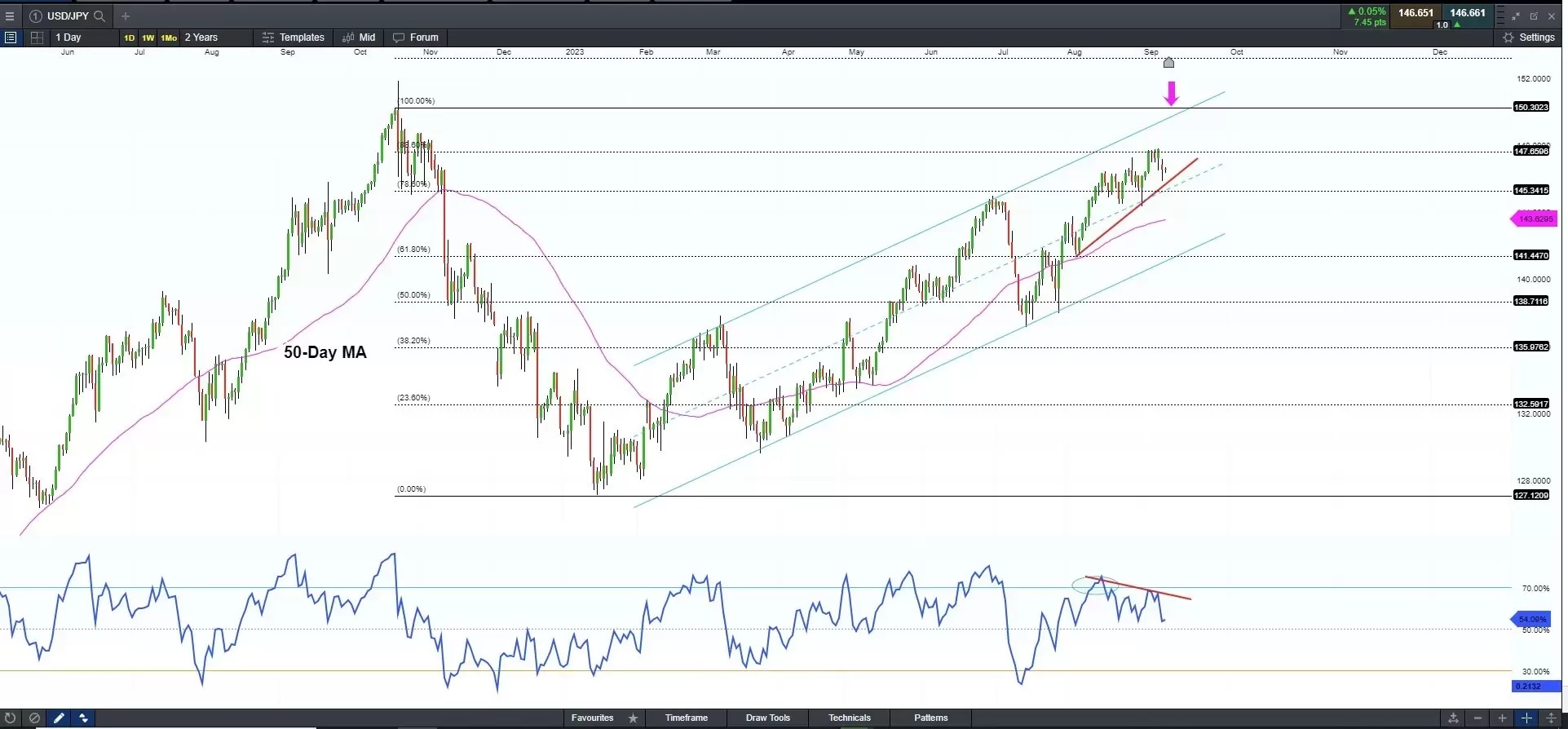With the Japanese Yen slumping against the US dollar towards a key psychological level of 150, bets for a BOJ’s intervention have been increasingly strengthened. The Bank of Japan (BOJ) intervened in the exchange rate in October 2022 when the USD/JPY rose to 152 at a point. The pair fell sharply to just above 127 in the following two months, which was also due to a decline in the USD.
In fact, Japan is happy to see sustainable inflation after a three-decade deflationary era. The government is now facing an issue that inflation was not primarily driven by consumer demand and wage growth but by higher import prices, which is not a healthy economic playout. Also, nearly 3% inflation is above the BOJ’s target level of 2%. Hence, the BOJ will need to intervene in the currency markets if the Yen weakens further. Traders believe that the BOJ would slowly normalize its ultra-loss monetary policy, as shown by weakened demands in the Japanese government bond auction lately.
The 10-year Japanese government bond yield spiked to 0.71% on Monday after the BOJ’s boss, Kazuo Ueda, signalled to bring an end to the decades-long negative interest rate by the year-end. However, unless a materialized action intervenes in the exchange rate, we may not see an absolute top-out pattern of the USD/JPY. The monetary policy divergence remains the main driver for the pair to climb. In the near term, the US August CPI data could be a catalyst for the pair to make a breakthrough. It could have a touch-and-go moment of the 150 before a technical correction from a technical perspective. Below is the chart analysis.
USD/JPY – bearish divergence surfaces
The pair is potentially forming a bearish divergence pattern, where the RSI has its lower high while the chart established a higher high. The pattern increases the chance for further technical correction in the pair, and the near support can be found at the 50-day moving average of 143.63.
In the long-term view, the uptrend is still intact, as the pair has been moving in an ascending channel since January. The pivotal resistance is about 150, which is the highest level seen in October 2022. And its key potential support can be found at 50% Fibonacci retracement, 141.45
Disclaimer: CMC Markets is an execution-only service provider. The material (whether or not it states any opinions) is for general information purposes only, and does not take into account your personal circumstances or objectives. Nothing in this material is (or should be considered to be) financial, investment or other advice on which reliance should be placed. No opinion given in the material constitutes a recommendation by CMC Markets or the author that any particular investment, security, transaction or investment strategy is suitable for any specific person. The material has not been prepared in accordance with legal requirements designed to promote the independence of investment research. Although we are not specifically prevented from dealing before providing this material, we do not seek to take advantage of the material prior to its dissemination.




